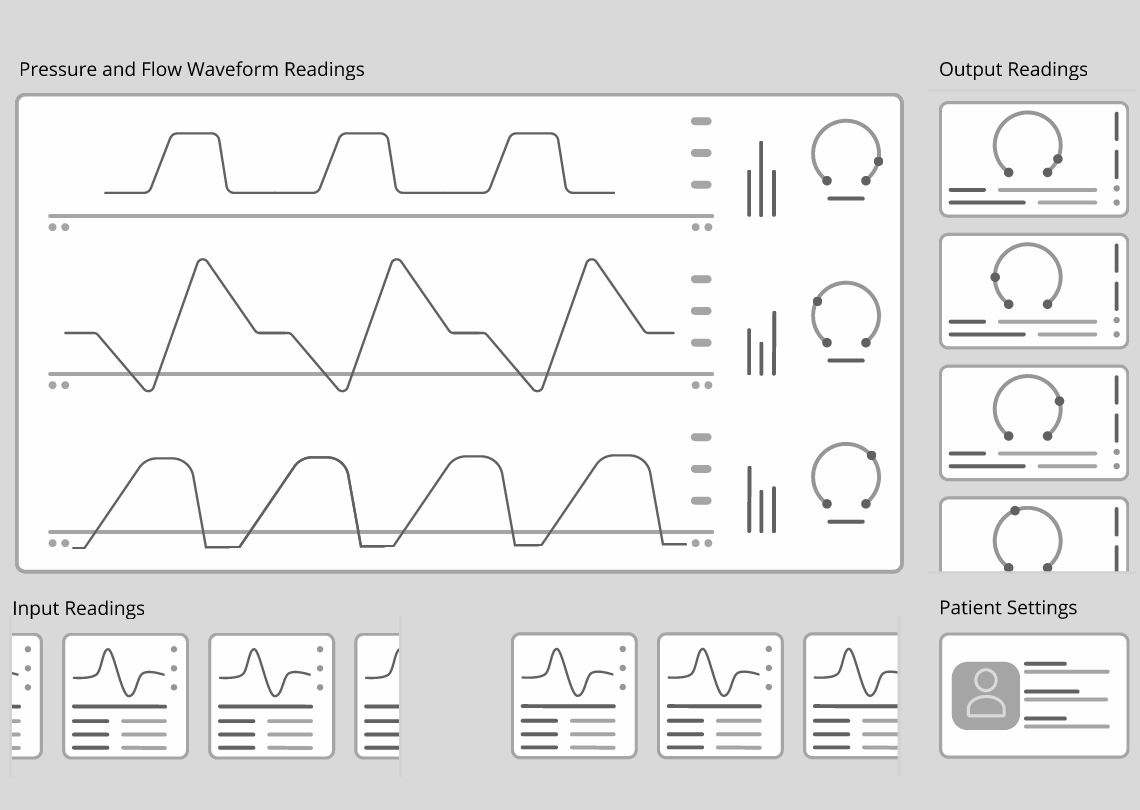ventOS Ventilator
COVID-19 Pandemic
COVID-19 changed the trajectory of this globe beginning the year of 2020. In the earlier months of 2020, hospital staff throughout the world was perplexed by this novel virus. Confusion was rampant, resources were limited, information was questionable.
Many, many lives were lost in the early stages of the pandemic because hospital staff did not have the proper information and knowledge on how to combat the virus and bring people back to health.
Ventilators played a role in helping those with COVID-19, but unfortunately played a role in harm. Patients were lost due to mismanaged ventilator care and only gained this insight through regrettable experience.
As of Feb. 2021, COVID-19 has:
Deaths - 2,479,765
Cases - 11,172,765
28 country wide closures
114,000,000 total jobs lost
100,000,000 jobs threatened
88,000,000 people entered extreme poverty
Over 110,000 restaurants permanently closed across US
208,848,445 affected students
Estimated global economy reduced by 4.4% in 2020
Estimated $1 Trillion loss according to Forbes
Key Highlights
Built global network of linked devices to monitor patients
Improved ventilator functionality for staff estimated 27%
Improved patient recovery rate estimated 18%
First Hand Knowledge
A critical part of our research came from front line workers and all staff with first hand interactions with COVID-19 patients. We were able to conduct user interviews and highlight insights, pain points, frustrations, and how ventilators can improve the outcome of similar pandemics.
The team came to the conclusion current ventilator interfaces caused varying levels of confusion to hospital staff with less experience. We wanted to create an overall experience and interface that was simple, but just as efficient, to use and help bring patients to health.
Team Makeup
Two Doctors
Two UX Designers
Two Engineers
One Researcher
One Developer
One Project Manager
Conducted research to understand the challenges faced by healthcare professionals, focusing on improving the readability and usability of ventilator screens. Collaborated with AI and machine learning teammate to develop an intuitive interface that streamline critical data visualization, reducing cognitive load and enhancing decision-making for medical staff.
My Role
Staff Research
Background
Nurse since 2010
Masters in Science Nursing, Family Nurse Practitioner
Bachelors in Science of Nursing
What are some of the most important pieces of information on a ventilator screen?
Some of the most important are Levels of Oxygenization, FIO2 readings, Tidal Volume, PEEP and Pressure Control are readings you want quick access to.
Can you explain how medical staff with limited years of experience compared to a doctor with years of experience differ in operating a ventilator?
A doctor will oversee the patient while a Respiratory Technician has different training in operating a ventilator. While Respiratory Technicians will execute more complex changes, a Registered Nurse will typically have more interaction with ventilators.
What is your overall experience with the influx of COVID patients on ventilators?
This is a global pandemic and hospitals around the world have been pushed beyond their limits. The state of California has a 2 to 1 nurse to patient ratio, during the pandemic we had to adjust to a 3 to 1 ratio.
When tending to patients, it is a necessary but time consuming process to suit up and deal with ventilator alarms. Developing a remote which can adjust levels and react to alarms would be beneficial and streamline the process.
Design Ideation
Home Screen
Being able to have visual info and access to every patient was crucial. With numerous patients, especially at times when they exceeded hospital resources, efficiency and response time was key to keep all patients in a stable state.
Responsive design across devices as well as color mapping was incorporated to quickly alert hospital staff the state of their patient’s health.
Patient Settings
Taking into account the high probability of multiple patients, we wanted to design a feature of having access to all patients in a modal window. Within this window, the hospital staff can gain direct access to patient info as well as their vitals.
Primary Vitals Screen
Each and every individual patient was absolutely critical. The main patient screen needed to be easily read by any and all staff which encompassed the greatest form of design inclusivity.
Taking into account these vitals would be read on smartphones in some scenarios, we had to maximize the real estate of every pixel. We created the ability to scroll through different patient readings while still maintaining visual of the main pieces of information such as the Flow Waveform and Pressure Waveform.
ventOS 1.0 Final Designs
A Global Network of Health
One goal from team ventOS was to help underserved parts of our globe, where patients can be connected to a network with greater understanding and overall resources. Patients in these specific areas can be monitored and have their ventilator vitals updated as needed from anywhere on Earth. This allows hospital staff to be connected to and benefit from the latest information available with assistance from a global network of healthcare staff.

















